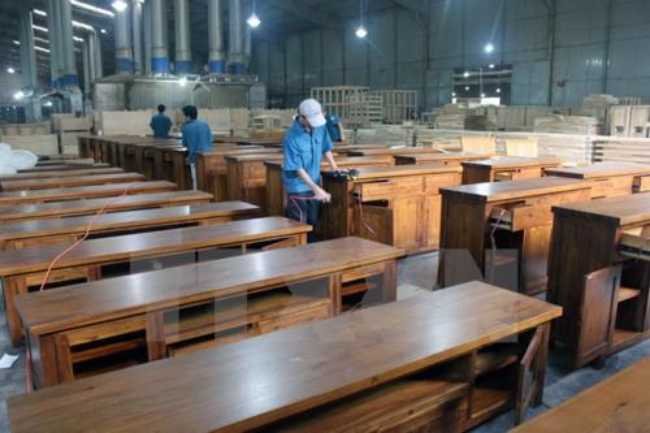Domestic wood processing companies have overtaken foreign direct investment (FDI) enterprises in terms of export revenue.
In previous years, FDI firms earned higher export revenue from wooden products than local processors, even accounting for 70% of the sector’s export turnover at certain times, said Nguyen Quoc Khanh, chairman of the HCMC Handicraft and Wood Industry Association (HAWA).

Workers are seen processing wooden products. Domestic firms are dominant in wood exports
Khanh was speaking at a press meeting on August 6 to introduce a government conference on orientations and solutions for rapid sustainable development in the wood processing sector, set to be held on August 8 in HCMC by the Ministry of Agriculture and Rural Development. Prime Minister Nguyen Xuan Phuc will chair the conference to talk with enterprises in the sector, stated Khanh.
In the last three years, domestic firms have earned 53% of the total export revenue from wooden products.
The growth of domestic wood processors is attributable to the high number of newly established wood processing companies and their active investment in modern equipment to expand their operations, Khanh explained.
It is noteworthy that many large clients have cooperated with local companies rather than FDI firms.
According to HAWA, the sector has contributed significantly to the country’s gross domestic product. With advantages in materials, human resources, experience and policies, Vietnam has become one of the five largest exporters of wooden products in the world.
Last year, the sector generated export revenue of US$8 billion. Export revenue in the first half of this year amounted to US$4.13 billion, up 12.4% year-on-year, according to statistics from the Ministry of Industry and Trade.
Meanwhile, domestic wood processors have reported a large volume of orders, which wil help realize the target of US$9 billion in export revenue. Some 100 wood processing enterprises have obtained annual export revenues of US$26-200 million and year-on-year growth rates of 5-7%.
HAWA Vice Chairman Huynh Van Hanh claimed that Vietnamese wooden products are highly valued. The main importers of made-in-Vietnam wooden products are the United States, China and Japan.
Since the end of 2014, the Government has banned enterprises from exploiting natural forests for the industry. With the growth of the sector, the country has to import materials or plant new forests to meet production demands.
According to HAWA, the development of the sector is also attributable to the increase in forestland. The volume of wood from local forests increased from 36% of demand in 2005 to 52% last year and is expected to reach 55% in 2020, while the volume of imported materials has reduced from 64% to the current 45%.
HAWA and various enterprises also believe that the local wood market has potential, having generated annual average revenue of US$2 billion in the past five years. Local enterprises have dominated the domestic market, holding more than 90% of the market share.
SGT